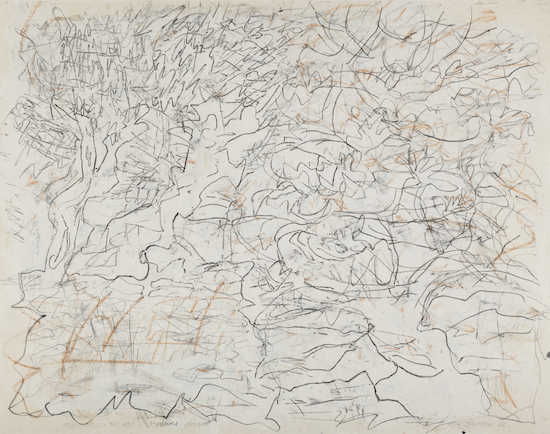From Sharne Wolff…
Perhaps one benefit of being a quiet achiever is that it allows an artist the opportunity to pursue the creative process without too many distractions. The late Roy Jackson (1944–2013) is often described that way. Spanning more than 50 years of his practice, Jackson’s retrospective exhibition is now showing in Sydney featuring a large selection of paintings, drawings, collages and workbooks.
Alongside his acknowledged European influences, locals such as Tony Tuckson and Ian Fairweather also gave impetus to Jackson’s style. The most discernable inspiration in the artist’s oeuvre, however, is his strong connection to the natural environment. A loose expressionist approach is evident in paintings such as Kythra and Olive Tree and Fig Tree (created in Kythra, Greece) made in the late 1970s to the lively swirls of Mereenie Loop painted almost two decades after. When Jackson moved to Wedderburn to reside among the community of artists that included John Peart, Elizabeth Cummings, Suzanne Archer, and David Fairbairn, his work adopted the varied patterns and markings of the physical landscape. Works such as Wang Wauk, Tidal and the gentle movement of Warrell Creek are indicative of this direction. From an interview with Terence Maloon in the exhibition monograph, Jackson also confirmed his admiration for the qualities of Aboriginal rock art, noting that there “…was nothing alienated or alienating about the situation of art vis-à-vis the world surrounding it. It was all completely and utterly right.”
Until April 12
National Trust S.H Ervin Gallery, The Rocks
Pic: Roy Jackson Olive tree and fig tree, Kythra, Greece 1978, water-soluble pencil and oil pastel on paper, 47 x 56cm. Courtesy the Estate of Roy Jackson.

